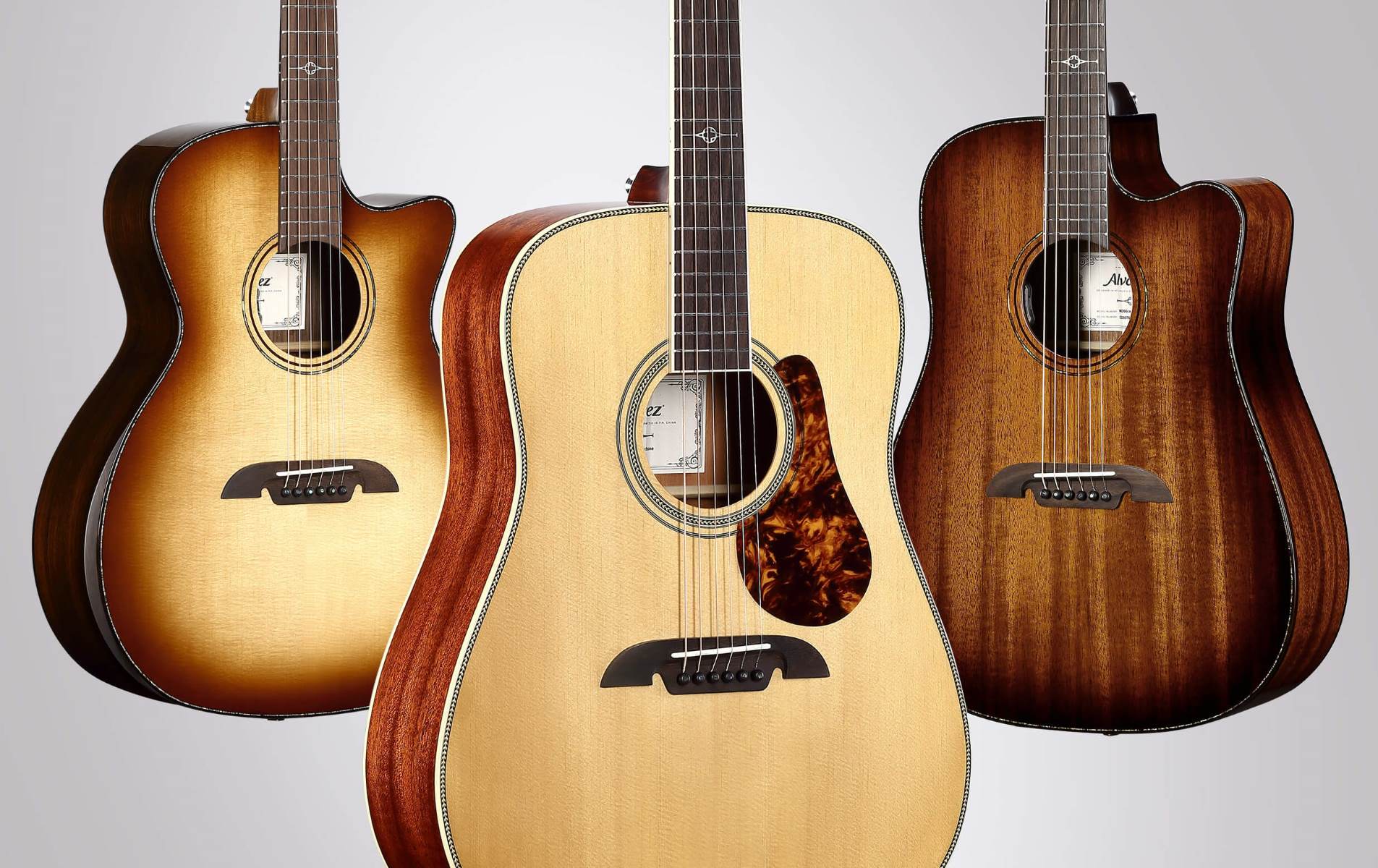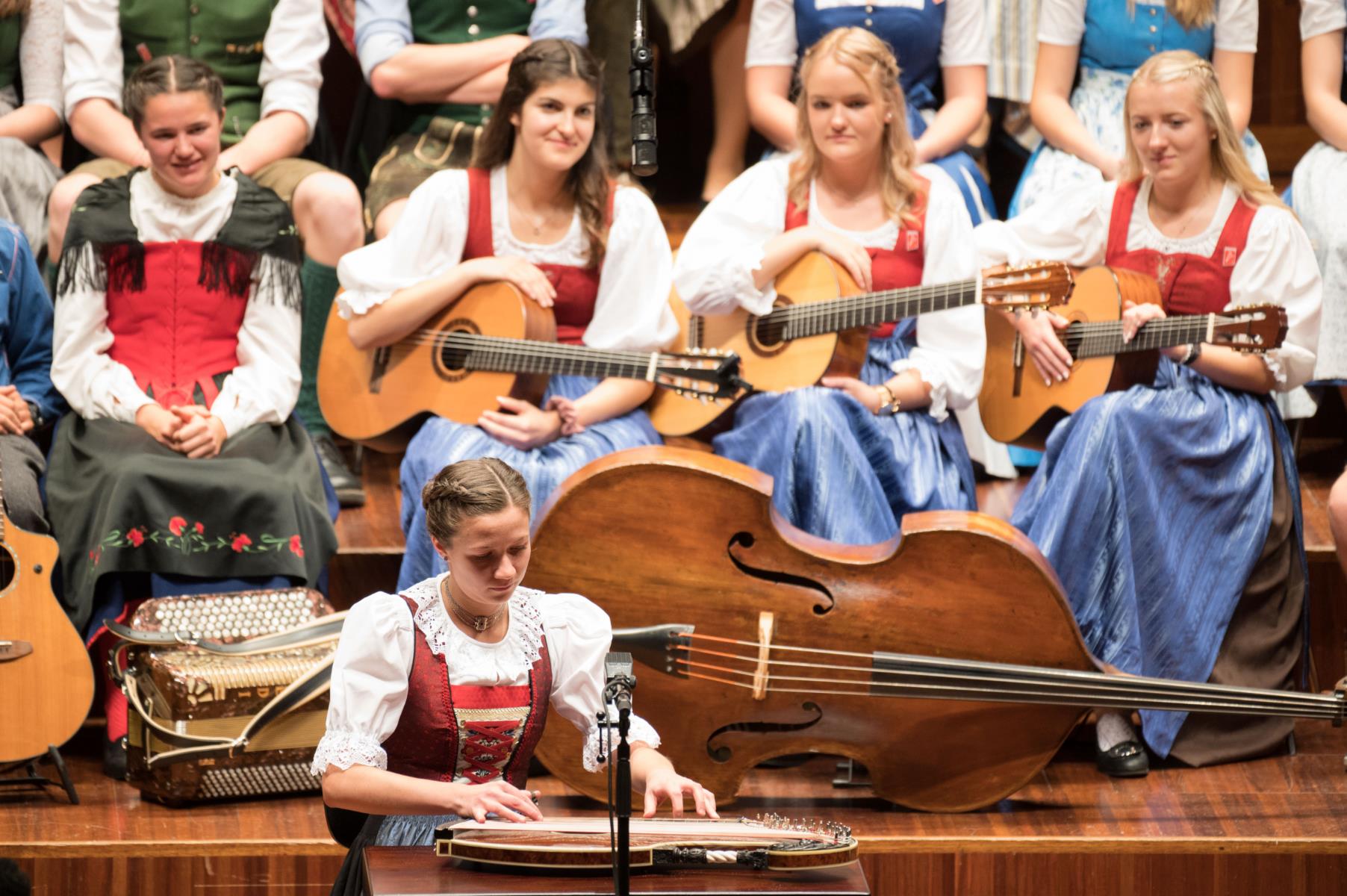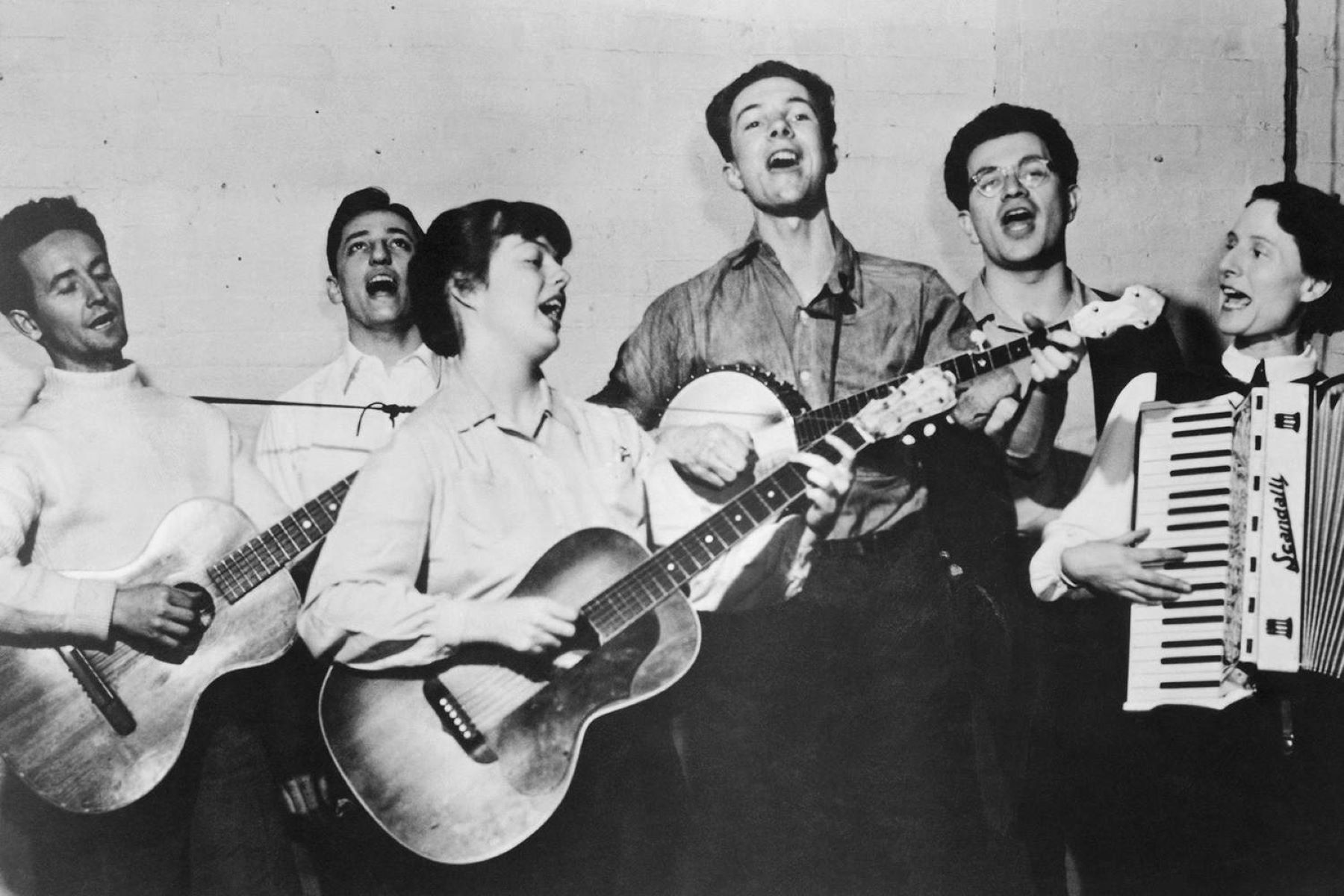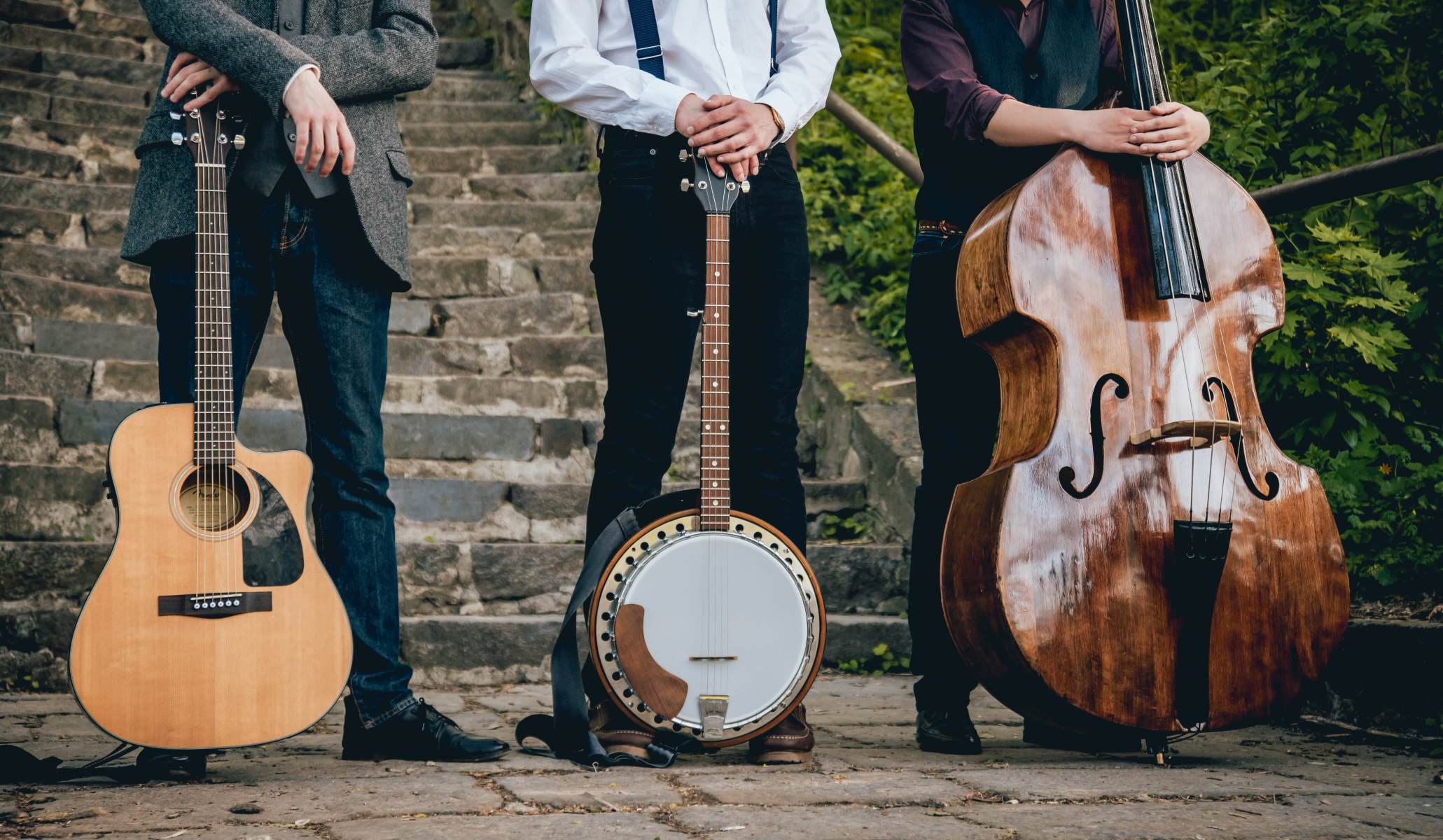

Folk
What Is A Folk Guitar
Modified: February 15, 2024
Discover the versatility and beauty of a folk guitar. Explore the rich history and unique sound of this timeless instrument. Unleash your creativity with folk music
(Many of the links in this article redirect to a specific reviewed product. Your purchase of these products through affiliate links helps to generate commission for AudioLover.com, at no extra cost. Learn more)
Table of Contents
Introduction
Folk music has held a special place in the hearts of people for centuries, and at the heart of this timeless genre is the folk guitar. The gentle strumming and melodic fingerpicking of the folk guitar have weaved their way into the tapestry of culture, telling stories, expressing emotions, and connecting communities.
Defined by its rich acoustic sound and versatile playing techniques, the folk guitar is a beloved instrument known for its simplicity and authenticity. Whether played around a campfire, in intimate coffeehouse settings, or on grand stages, the folk guitar carries with it the spirit of shared experiences and human connection.
In this article, we will dive into the world of folk guitar, exploring its history, characteristics, playing techniques, popular styles, and notable folk guitarists. Whether you’re a seasoned musician or just beginning your musical journey, this guide will provide you with a comprehensive understanding of this beautiful instrument.
So, grab your favorite acoustic guitar, sit back, and let’s embark on a journey to discover the enchanting world of the folk guitar.
Definition of Folk Guitar
The folk guitar is a type of acoustic guitar that is specifically designed to be played in genres associated with folk music. It is characterized by its distinct sound, construction, and playing techniques that lend themselves well to the storytelling and emotional expression often found in folk music.
While there are various styles and variations of guitars used in folk music, the folk guitar typically refers to steel-string acoustic guitars that have a bright and resonant tone. It is typically smaller in size than classical guitars, making it more comfortable to hold and play for extended periods.
One of the defining features of the folk guitar is its emphasis on simplicity and minimalism. Folk guitarists often opt for plain designs without elaborate ornamentation, focusing instead on the quality of sound and playability. This simplicity allows the guitar to be versatile and adaptable to a wide range of folk music styles and playing techniques.
The folk guitar is also known for its ability to be played both rhythmically and melodically. Folk guitarists commonly use fingerpicking or strumming patterns to create complex rhythms that serve as the backbone of the music. Additionally, the guitar’s fingerboard allows for intricate melodic lines and chord progressions that enhance the storytelling aspect of folk music.
Overall, the folk guitar is a vital instrument in folk music, providing a warm and organic sound that resonates with the emotions and stories communicated through the genre. Its simplicity, versatility, and ability to evoke a sense of tradition and connection make it an essential tool for any folk musician.
History of Folk Guitar
The roots of the folk guitar can be traced back thousands of years to ancient civilizations. However, the instrument as we know it today has its origins in the 19th century when it gained popularity among folk musicians in Europe and North America.
During the 19th century, the guitar experienced significant advancements in construction and design. This led to the creation of steel-string guitars, which had a brighter and more powerful sound compared to the traditional gut-string guitars. This innovation allowed the guitar to better accompany the vocals and resonate within larger venues, making it a popular choice among folk musicians.
In Europe, particularly in countries like Spain and Italy, the guitar became an integral part of traditional folk music. Styles such as flamenco and fingerstyle guitar playing developed, showcasing the guitar’s ability to convey complex rhythmic patterns and evoke a range of emotions.
In North America, the folk guitar found its place in the heart of American roots music. As settlers and immigrants from various cultural backgrounds brought their musical traditions to the New World, the guitar became a common instrument in genres such as blues, country, and folk ballads.
During the mid-20th century, the folk music revival of the 1960s propelled the folk guitar into the mainstream. Artists like Pete Seeger, Bob Dylan, Joan Baez, and Joni Mitchell used the guitar to accompany their poignant lyrics and capture the spirit of social change and protest movements. This era cemented the folk guitar’s place in popular culture and set the stage for generations of folk guitarists to come.
Today, the folk guitar continues to thrive, blending traditional folk styles with modern influences. Its versatility and timeless appeal have made it a staple in genres ranging from traditional folk and acoustic singer-songwriter to indie folk and beyond. Whether played in small coffeehouses or on large festival stages, the folk guitar remains a symbol of authenticity and storytelling, connecting people through the power of music.
Characteristics of Folk Guitar
The folk guitar possesses several distinctive characteristics that set it apart from other types of guitars. These characteristics contribute to the unique sound and playability that make it well-suited for folk music.
1. Acoustic Sound: The folk guitar is an acoustic instrument, meaning it is not amplified electronically. Its hollow body and soundhole allow the vibrations of the strings to resonate and create a warm, rich, and natural sound.
2. Steel Strings: Unlike classical guitars that typically have nylon strings, the folk guitar is strung with steel strings. These strings produce a brighter and more powerful tone, allowing the guitar to cut through in a group setting or when accompanying vocals.
3. Compact Size: Folk guitars are generally smaller in size compared to classical guitars. This compact design not only makes them more comfortable to hold, but it also contributes to their portability, making them ideal for traveling musicians and impromptu jam sessions.
4. Simple Construction: Folk guitars often feature a straightforward design with minimal ornamentation. The focus is on functionality and playability, allowing for effortless chord changes and fingerpicking patterns.
5. Versatile Neck: The neck of a folk guitar usually has a narrow width and a slightly curved shape, which allows for easier fretting and facilitates fast playing techniques. This makes it more accessible for both beginners and advanced players.
6. Fingerpicking and Strumming: The folk guitar lends itself well to fingerpicking and strumming styles. Fingerpicking allows for the intricate plucking of individual strings, while strumming creates a rhythmic foundation for the music.
7. Storytelling Voice: The folk guitar’s tonal qualities and resonance make it an excellent instrument for conveying the emotions and narratives often found in folk music. Its warm and intimate sound creates a captivating musical backdrop that supports the storytelling aspect of the genre.
8. Adaptability: The folk guitar is versatile and can be used in various folk music styles, whether it be traditional folk, country, blues, or contemporary indie folk. Its adaptability allows musicians to explore different genres and experiment with diverse playing techniques.
In summary, the folk guitar’s acoustic sound, steel strings, compact size, simple construction, versatile neck, fingerpicking and strumming capabilities, storytelling voice, and adaptability make it a cherished instrument among folk musicians. Its unique characteristics contribute to the captivating and soulful nature of folk music, connecting listeners with the stories and emotions it conveys.
Playing Techniques on Folk Guitar
The folk guitar offers a wide range of playing techniques and styles that contribute to the distinctive sound and musical expression associated with folk music. From fingerpicking patterns to strumming techniques, mastering these techniques can greatly enhance your playing and allow you to explore the versatility of the instrument.
1. Fingerpicking: Fingerpicking is a technique where the guitarist plucks the strings with their fingers instead of using a pick. It allows for greater control and intricacy in playing melodic lines, arpeggios, and chord progressions. Fingerpicking patterns, such as the classic Travis picking or alternating bass technique, are commonly used in folk music.
2. Strumming: Strumming involves using a pick or the fingers to brush or strike the strings. It creates a rhythmic foundation and adds energy to the music. Depending on the song and style, strumming patterns can range from simple downstrokes to complex combinations of upstrokes, downstrokes, and percussive techniques.
3. Flatpicking: Flatpicking is a technique where the guitarist uses a flat pick to play individual notes or strum chords. This technique is commonly used in folk music genres such as bluegrass and country. It allows for greater speed and precision in playing melodies and solos.
4. Hammer-ons and Pull-offs: Hammer-ons and pull-offs are techniques that create legato (smooth and connected) notes without re-plucking the string. A hammer-on involves playing a note and then using a finger to “hammer” onto a higher fret, producing a new note. A pull-off, on the other hand, involves plucking a note and then pulling the finger off the string to produce a lower note.
5. Slides: Slides are used to smoothly transition from one note to another by gliding the finger along the fretboard. Slides can be performed in various directions, including upward slides (from a lower to a higher pitch) and downward slides (from a higher to a lower pitch). Slides add a vocal-like quality to the guitar playing, often used to emulate the bluesy or soulful sound found in folk music.
6. Open Tunings: Open tunings involve tuning the guitar strings to form a specific chord when played open (without pressing any frets). Popular open tunings used in folk music include Open D, Open G, and Drop D. Open tunings can provide a unique harmonic and resonant quality to the guitar, allowing for different chord voicings and facilitating the creation of rich and textured sounds.
7. Percussive Techniques: Percussive techniques involve incorporating percussive elements into the guitar playing, such as palm muting, slaps, taps, and percussive hits on the body of the guitar. These techniques add rhythmic interest and dynamic contrasts to the music, creating a more engaging and rhythmic experience.
Remember, mastering these techniques takes practice and patience. Experiment with different styles and adapt them to fit your personal musical expression. The key is to develop your own unique playing style while staying true to the soulful and authentic nature of folk music.
Popular Folk Guitar Styles
Folk music encompasses a wide array of styles and traditions from different cultures and regions. Each style carries its own unique characteristics and influences, creating a diverse and vibrant folk music landscape. Here are some popular folk guitar styles that have made a significant impact on the genre:
1. Traditional Folk: Traditional folk is deeply rooted in the history and culture of a specific region or community. It often includes traditional ballads, instrumental tunes, and storytelling songs that have been passed down through generations. Traditional folk guitar styles can vary widely, from Appalachian fingerpicking in the United States to Celtic fingerstyle in Ireland.
2. Country Folk: Country folk combines elements of traditional folk music with country music influences. This style is characterized by heartfelt storytelling, simple chord progressions, and acoustic instrumentation. Country folk guitar often features strumming patterns, fingerpicking, and a focus on lyrics that reflect rural and working-class themes.
3. Contemporary Singer-Songwriter: The contemporary singer-songwriter style emerged during the folk music revival of the 1960s. Artists like Bob Dylan, Joni Mitchell, and James Taylor popularized this style, which is characterized by personal and introspective songwriting accompanied by acoustic guitar. The guitar playing in contemporary singer-songwriter folk often combines fingerpicking patterns, strumming, and intricate chord progressions.
4. Bluegrass: Bluegrass is a high-energy form of folk music developed in the United States. It is known for its fast-paced melodies, intricate harmonies, and virtuosic instrumental solos. Bluegrass guitar playing incorporates flatpicking techniques, quick chord changes, and characteristic rhythm patterns that contribute to the lively and infectious sound of the genre.
5. Blues Folk: Blues folk combines elements of traditional folk with the intensity and emotion of the blues. This style features soulful vocals, slide guitar playing, and storytelling lyrics that often reflect personal experiences and struggles. Blues folk guitarists incorporate slide techniques, fingerpicking, and bluesy chord progressions to create a raw and expressive sound.
6. World Folk: World folk incorporates folk music traditions from various cultures around the world, blending different rhythms, scales, and instruments. The guitar is often used to provide a foundation and accompaniment to the diverse musical elements. World folk guitar styles can range from the flamenco-inspired rhythms of Spanish folk music to the intricate fingerpicking patterns of African folk traditions.
These are just a few examples of the many folk guitar styles that exist. Each style carries its own unique musical language and serves as a reflection of the cultural and historical context from which it originated. Whether you find yourself captivated by the storytelling of traditional folk or enticed by the rhythmic complexity of bluegrass, exploring different folk guitar styles offers a world of musical discovery and inspiration.
Notable Folk Guitarists
Throughout history, countless talented musicians have left an indelible mark on the world of folk guitar. These artists have pushed the boundaries of the instrument, elevated the genre, and inspired generations of folk guitarists to come. Here are just a few notable folk guitarists who have made a significant impact:
1. Bob Dylan: Bob Dylan is a legendary figure in both folk and popular music. His poetic songwriting and distinctive guitar playing played a pivotal role in the folk music revival of the 1960s. Known for his fingerpicking style and iconic songs like “Blowin’ in the Wind” and “The Times They Are a-Changin’,” Dylan’s influence on folk guitar cannot be overstated.
2. Joni Mitchell: Joni Mitchell is a singer-songwriter renowned for her innovative guitar tunings, complex chord progressions, and poetic lyrics. With songs like “Both Sides Now” and “Big Yellow Taxi,” Mitchell’s unique fingerstyle guitar playing and her ability to capture emotions through her intricate compositions have made her one of the most influential folk guitarists of all time.
3. Tommy Emmanuel: Hailing from Australia, Tommy Emmanuel is a virtuoso acoustic guitarist known for his incredible fingerpicking technique and captivating live performances. His mastery of the instrument transcends genres, but his intricate folk and fingerstyle arrangements have earned him accolades and a dedicated following around the world.
4. Elizabeth Cotten: Elizabeth Cotten was an American folk and blues guitarist known for her unique left-handed fingerstyle technique, known as “Cotten picking.” Her signature song “Freight Train” is a folk classic. Cotten’s pioneering guitar playing and powerful storytelling made her a trailblazer for women in folk music.
5. Doc Watson: Doc Watson was an influential folk guitarist known for his flatpicking style and rich baritone voice. His mastery of traditional folk and bluegrass guitar playing set the standard for generations of musicians to come. Songs like “Deep River Blues” and “Black Mountain Rag” showcase his exceptional skill and deep connection to the roots of American folk music.
6. Ani DiFranco: Ani DiFranco is a singer-songwriter known for her unique blend of folk, punk, and spoken word. Her guitar playing incorporates intricate fingerpicking, percussive techniques, and complex chord voicings. DiFranco’s socially conscious lyrics and distinctive guitar style have made her a powerful voice in modern folk music.
7. Bert Jansch: Bert Jansch was a Scottish folk guitarist and a founding member of the influential folk band Pentangle. Known for his intricate fingerstyle playing and introspective songwriting, Jansch’s guitar work on songs like “Blackwaterside” and “Needle of Death” solidified his reputation as one of the most talented and innovative folk guitarists of his time.
These are just a few examples of the countless folk guitarists who have made significant contributions to the genre. Each artist has left a unique imprint on the folk music landscape, inspiring and influencing aspiring musicians to pick up the guitar and share their own stories through music.
Conclusion
The folk guitar holds a special place in the world of music, offering a gateway to the rich heritage of folk traditions and timeless storytelling. Its acoustic sound, simplicity, and versatility have captured the hearts of musicians and audiences alike for generations.
From the early days of traditional folk to the modern interpretations of contemporary singer-songwriters, the folk guitar has continually evolved and adapted to reflect the changing times. It has seamlessly woven itself into the fabric of various musical styles, bridging cultures and fostering a sense of community through its emotive melodies and heartfelt lyrics.
Throughout this article, we have explored the definition, history, characteristics, playing techniques, popular styles, and notable folk guitarists. We have witnessed the charm and allure of fingerpicking patterns, the power of strummed chords, and the intricate storytelling embedded within every note.
Whether you are drawn to the raw authenticity of traditional folk, the melodic complexity of bluegrass, or the introspective musings of contemporary singer-songwriters, the folk guitar offers a world of musical possibilities. It serves as a conduit for expressing emotions, sharing stories, and fostering a sense of connection between musicians and listeners.
So, whether you are a seasoned guitarist looking to expand your repertoire or a beginner embarking on your musical journey, take inspiration from the rich heritage of folk guitar. Embrace its simplicity, explore its nuances, and let its timeless melodies resonate within you.
Grab your guitar, let your fingers dance across the strings, and delve into the enchanting world of the folk guitar. Discover the power of its sound, embrace its expressive nature, and let the music take you on a captivating journey filled with poignant melodies and heartfelt lyrics.
Remember, the beauty of the folk guitar lies not only in its technical proficiency but also in its ability to evoke emotions, tell stories, and bring people together. So, keep strumming, keep picking, and keep the spirit of folk music alive and thriving.











